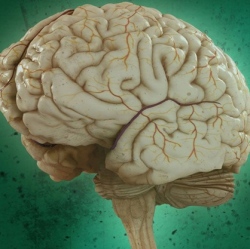
Glia are thought of as the support staff for the brain’s nerve cells, or neurons, which transmit and receive the brain’s electrical and chemical signals. Named for the Greek term for “glue,” glia have been known for nearly 170 years as the cells that hold the brain’s bits together.
Some glial cells help feed neurons. Other glia insulate nerve cell branches with myelin. Still others attack brain invaders responsible for infection or injury. Glial cells perform many of the brain’s most important maintenance jobs.
But recent studies suggest they do a lot more. Glia can shape the conversation between neurons, speeding or slowing the electrical signals and strengthening neuron-to-neuron connections. When scientists coaxed human glia to grow in the brains of baby mice, the mice grew up to be supersmart, navigating tabletops full of holes and mastering other tasks much faster than normal mice. This experiment and others suggest that glia may actually orchestrate learning and memory, says neuroscientist R. Douglas Fields.
“Glia aren’t doing vibrato. That’s for the neurons,” says Fields, of the National Institute of Child Health and Human Development in Bethesda, Md. “Glia are the conductors.” They may be telling neurons when and where to send their signals and how loud those signals should be. Scientists are beginning to get a sense of how glia coordinate the brain’s intricate symphony of signals, Fields says.
Accepting glia’s role in learning and memory has been a gradual progression, says Andrew Koob, a neurobiologist at the University of Wisconsin–River Falls. Neuroscientists have been focused on neurons because neurons tend to be bigger than glial cells and their electrical signals have been easier to study. And much research on the brain’s information processing is focused on synapses, the communication junctions where chemical messages are passed between neurons.
